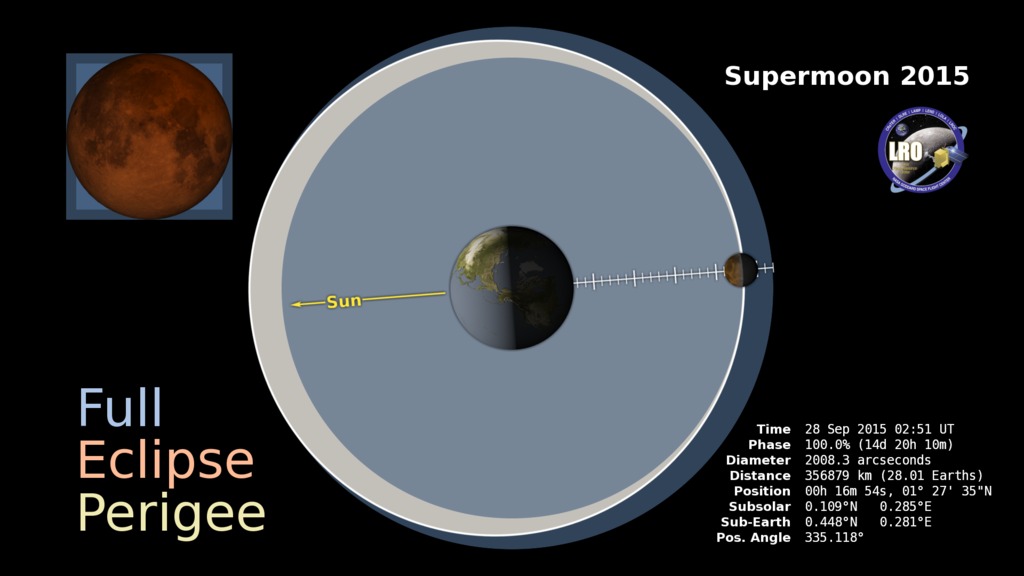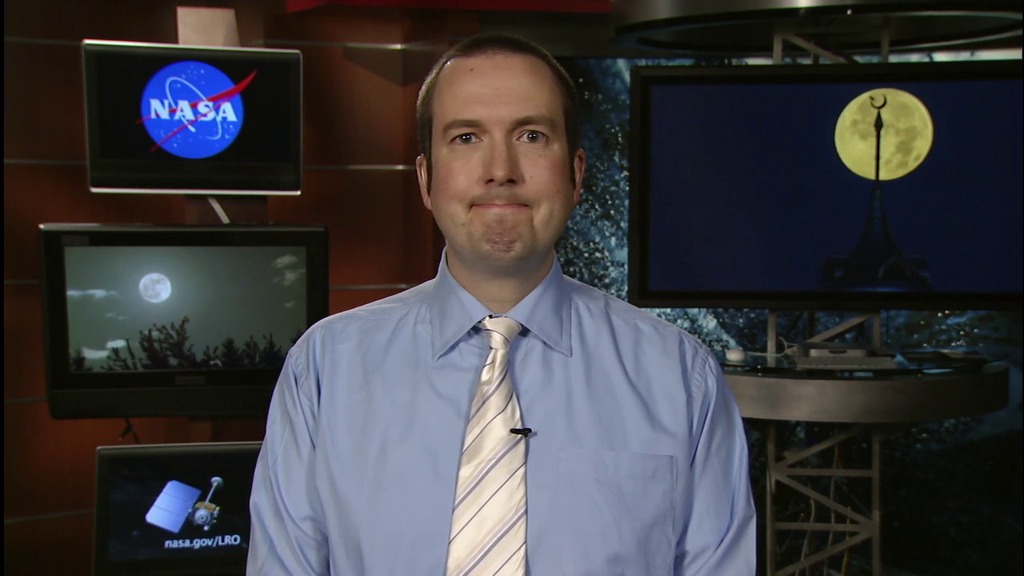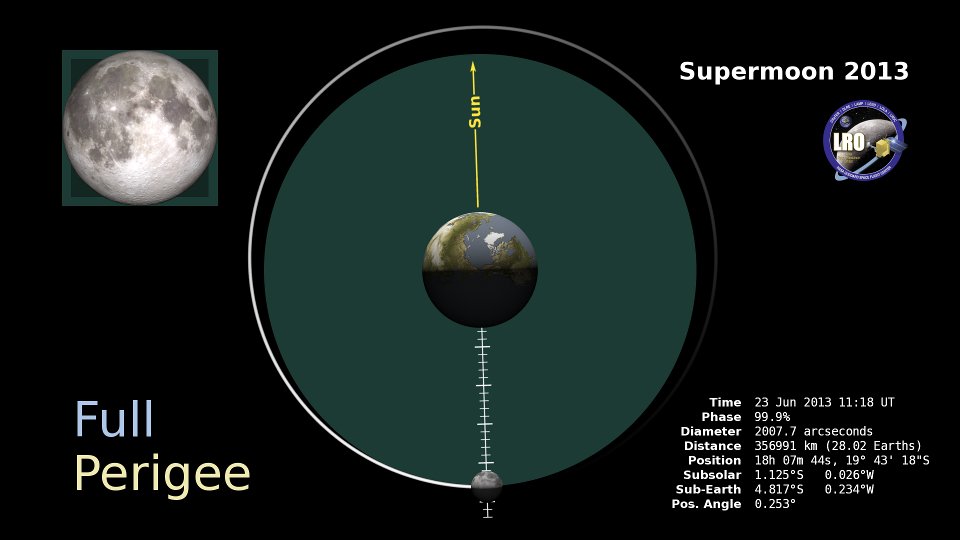Supermoon 2014
On August 10, 2014, the Moon will be full at the same time that it is closest to Earth for the year. This coincidence is sometimes called a supermoon.
The Moon's orbit is very slightly elliptical and therefore somewhat off-center relative to the Earth. Each month, the Moon passes through points in its orbit called perigee and apogee, the closest and farthest points from the Earth for that month. Some perigees are a little closer than others. The closest perigee for 2014 occurs on August 10 at around 17:49 Universal Time, when the Moon will be 356,896 kilometers (221,765 miles) away. As it happens, this is only a few minutes before the time of peak full Moon at 18:10 UT, when the Moon's ecliptic longitude differs from the Sun's by exactly 180 degrees.
How often does this happen? The period between perigees, called the anomalistic month, is 27.55 days, on average, while the time between Full Moons, called the synodic month, is 29.53 days. These two periods sync up every 413 days, or 1.13 years. 15 anomalistic months are about as long as 14 synodic months, so that's how often the pattern repeats.
Recently, a much broader definition of "supermoon" has taken hold. It includes both Full and New Moons, and perigee merely needs to be "close enough," generally within a couple of days. By this definition, there are six or seven supermoons every year, half of which can't be observed. Not so super!
The actual shape of the Moon's orbit is another source of confusion. The orbit is often depicted as an almost cigar-shaped ellipse, but this is a misleading exaggeration. If you were to draw the orbit on a sheet of paper, its deviation from a perfect circle would be less than the thickness of your pencil point. The 50,000 kilometer (30,000 mile) difference between perigee and apogee is almost entirely due to the orbit being off-center. The difference between the semimajor and semiminor axes is less than 1000 kilometers (600 miles).
The animation begins in mid-July, showing that perigee and Full Moon miss each other by about a day. It then shows apogee on July 28, when the Moon is almost 32 Earth diameters away. It ends on August 10, the day of the supermoon, when the distance to the Moon is 28 Earth diameters. The Moon graphic in the upper left shows the change in the Moon's apparent size as it moves closer and farther in its orbit. (The relative sizes of the Earth and Moon in the main orbit graphic are exaggerated by a factor of 15 to make them more easily visible.)
The geometry of the Moon's orbit in motion, from mid-July until the supermoon on August 10, 2014. The inner blue circle shows perigee distance, the outer blue circle shows apogee distance, and the off-center, light gray circle shows the Moon's orbit. Frame sequences with alpha channels are available for the separate elements of the animation.
A simpler version of the animation, showing the Moon's orbital motion from apogee on July 28 to the perigee Full Moon on August 10.

A layered Photoshop file containing all of the static images used to compose the animations.

A still image showing the Earth and Moon at true scale.
Credits
Please give credit for this item to:
NASA's Scientific Visualization Studio
-
Animator
- Ernie Wright (USRA)
-
Producers
- Claire Saravia (NASA/GSFC)
- David Ladd (USRA)
-
Scientists
- Noah Petro (NASA/GSFC)
- Michelle Thaller (NASA/GSFC)
-
Project support
- Laurence Schuler (ADNET Systems, Inc.)
- Ian Jones (ADNET Systems, Inc.)
Release date
This page was originally published on Friday, August 8, 2014.
This page was last updated on Wednesday, May 3, 2023 at 1:50 PM EDT.
Missions
This visualization is related to the following missions:Series
This visualization can be found in the following series:Datasets used in this visualization
-
DEM (Digital Elevation Map) [LRO: LOLA]
ID: 653 -
DE421 (JPL DE421)
ID: 752Planetary ephemerides
This dataset can be found at: http://ssd.jpl.nasa.gov/?ephemerides#planets
See all pages that use this dataset -
WAC 643nm High Sun Global Mosaic [LRO: LROC]
ID: 803
Note: While we identify the data sets used in these visualizations, we do not store any further details, nor the data sets themselves on our site.


